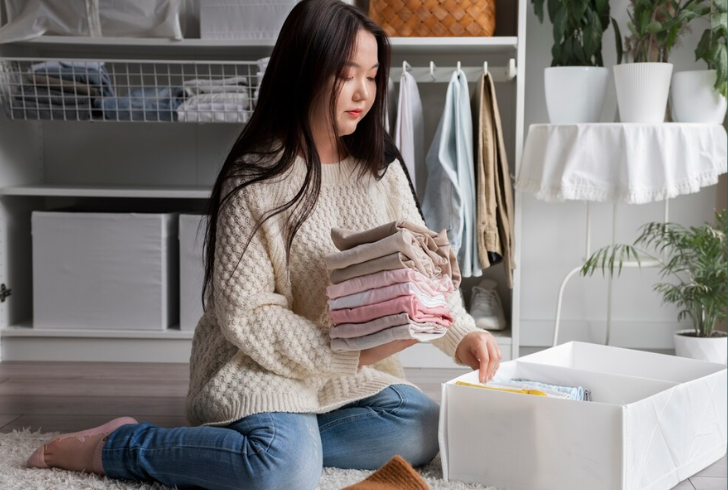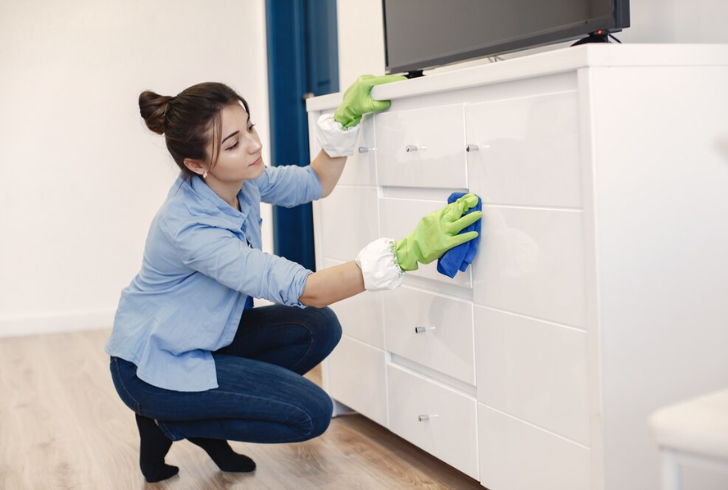Decluttering isn’t just about organizing your space; it’s about creating a stress-free environment that allows you to breathe a little easier and focus on what truly matters. A well-organized home improves productivity, reduces anxiety, and makes everyday living more efficient.
Whether you’re tackling an overstuffed closet or a cluttered kitchen, breaking the process into manageable steps makes all the difference.
Understanding the Importance of Decluttering
Decluttering doesn’t just create a cleaner environment; it has a real impact on your well-being. A clutter-free space can reduce stress, improve focus, and make it easier to find the things you need. It also promotes a more organized lifestyle, which can make your daily tasks run more smoothly.
Here are some additional benefits of keeping your home clutter-free:
1. Reduces the feeling of being overwhelmed by the amount of “stuff” around you.
2. Makes cleaning and organizing easier since you have fewer things to manage.
3. Increases mental clarity by allowing you to focus more on tasks that matter.
4. Promotes a more peaceful, stress-free environment.

With these benefits in mind, let’s dive into how you can declutter your home room by room, starting with areas that typically accumulate the most clutter.
The Best Methods for Decluttering Each Room
When it comes to decluttering, the key is to focus on one room at a time. Trying to declutter the entire house in one go can lead to frustration and burnout. Here’s how to break it down effectively for each room.
1. The Bathroom
Start small, beginning with the medicine cabinet. Toss expired medications, old skincare products, and makeup you no longer use. Arrange what remains with frequently used items within easy reach. Next, clear out drawers, and categorize items to determine what stays. Don’t forget areas like the shower, tub, and sink—these often accumulate unnecessary products that can be discarded.
2. The Bedroom
An unmade bed instantly makes a room feel cluttered. Begin by tidying up the bed, setting the stage for a more organized space. Nightstands are another hotspot for unnecessary items like old books, broken chargers, or empty containers. Clear them off and return items to their rightful places.
Declutter dresser tops and drawers, remove clothes you no longer wear, and set them aside for donation. Finish with the desk or vanity, sorting through items and eliminating anything unused for months.
3. Closets and Clothing
To make this task manageable, focus on clothing categories. For instance, gather all your jeans and decide which to keep, donate, or repair. This method simplifies decision-making and ensures thorough organization. Once sorted, place unused or out-of-season items in storage, handle repairs immediately, and deliver donations to a local center.
4. Entryways and Mudrooms
Entryways often become dumping grounds for shoes, bags, and miscellaneous items. Clear out drawers and tabletops, keeping only essentials like keys or mail organizers. For closets, evaluate shoes, jackets, and accessories. Return misplaced items to their proper spots in other rooms to keep this high-traffic area functional and inviting.
5. The Kitchen
The kitchen is one of the most challenging spaces to declutter due to its multifunctional use. Tackle one zone at a time, such as cabinets or the pantry. Remove everything, check expiration dates, and return only what’s still good and needed. Sort utensils, glassware, and appliances to determine what truly adds value to your daily cooking routine. Regularly revisiting these areas ensures long-term organization.
6. The Living Room

As a high-traffic area, the living room often collects clutter like remote controls, magazines, and electronics. Designate permanent spots for these items to make daily tidying more manageable. Focus on large storage units such as bookshelves and TV consoles, emptying them entirely before reorganizing. Assess toys, games, and unused decor to decide what stays and what goes, keeping only what adds function or joy to the space.
Smart Disposal of Unwanted Items
Once you’ve decluttered, decide how to handle the items you no longer need:
1. Donate – Gently used items can be donated to charities or thrift stores, benefiting others while reducing waste.
2. Recycle – Learn your local recycling guidelines for electronics, batteries, or other specialized materials.
3. Sell – Consider selling higher-value items online or through garage sales for some extra cash.
4. Trash – Reserve this option for items that are truly unusable, ensuring responsible disposal wherever possible.
Decluttering doesn’t just organize your home; it transforms how you live in it. By systematically approaching each room and being intentional about what you keep, you can create a space that feels lighter, calmer, and more functional.




